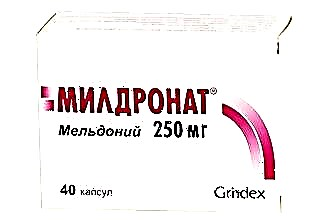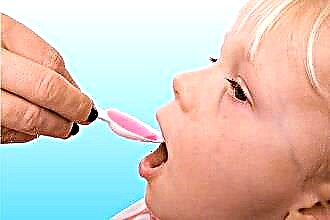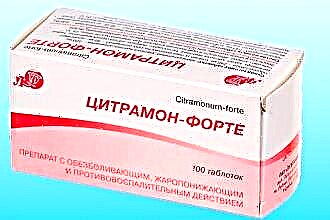This is a complex disease of the paranasal sinuses. With it, there is inflammation of several (sometimes all) sinuses at once on one side. So you can briefly define what hemisinusitis is. Further, about some of the features of the disease, its main symptoms, types and treatment options.
Features of the course of the disease
 Depending on which side the disease has developed, right-sided hemisinusitis and its opposite are distinguished. In the first case, two or three zones are affected on the right side. Left-sided hemisinusitis is characterized by inflammation, for example, in the frontal sinus and ethmoid labyrinth on the left side of the face. The maxillary sinus may join the affected areas, but the symptoms will only spread to the left side.
Depending on which side the disease has developed, right-sided hemisinusitis and its opposite are distinguished. In the first case, two or three zones are affected on the right side. Left-sided hemisinusitis is characterized by inflammation, for example, in the frontal sinus and ethmoid labyrinth on the left side of the face. The maxillary sinus may join the affected areas, but the symptoms will only spread to the left side.
Regardless of which disease affects the side, general symptoms are noted. It:
- headache;
- runny nose;
- difficulty breathing on one side;
- feeling of weakness throughout the body;
- high temperature;
- decreased appetite.
Localization of pain, difficulty in breathing depends on which part of the head the inflammation develops.
The pain that appears almost above the bridge of the nose, closer to the inner corner of the eye or under the eye, increases in the evening, and at the same time there is a feeling of heaviness on one side.
In addition, in the acute and chronic course of the disease, the symptoms are somewhat different. Acute hemisinusitis is characterized by severe headache and symptoms persist for almost a month. Then the disease goes into a subacute stage, after which - into a chronic one. For the chronic form, moderate pain syndrome is considered characteristic, and the symptoms themselves are observed for more than three months.
 All varieties of the disease are distinguished by edema of the mucous membrane, the formation of a secret, a violation of the communication of the sinuses with the new cavity. If an infection has joined (streptococcal, staphylococcal, pneumococcal), one of the most dangerous varieties develops - purulent hemisinusitis. In this case, clots of pathogenic bacteria are formed, as evidenced by thick discharge with an admixture of pus. In addition, there are additional signs:
All varieties of the disease are distinguished by edema of the mucous membrane, the formation of a secret, a violation of the communication of the sinuses with the new cavity. If an infection has joined (streptococcal, staphylococcal, pneumococcal), one of the most dangerous varieties develops - purulent hemisinusitis. In this case, clots of pathogenic bacteria are formed, as evidenced by thick discharge with an admixture of pus. In addition, there are additional signs:
- an increase in temperature in the evening and at night;
- alternation of a slight improvement with a new deterioration;
- violation of the sense of smell;
- pus taste in the mouth;
- swelling of the face on one side.
The danger of the disease is that there is a risk of the spread of a purulent process through the blood vessels to the meninges, the development of bronchitis or pneumonia.
Inflammation causes
One of the most common causes of the disease is often cited as improper cleaning of the nasal cavity and mucus getting into the sinuses. The structure of the cranium is also important, when obstacles were initially created for the outflow of mucus, and one of these pathologies may be a curvature of the nasal septum. The disease is often provoked by polyps, when the outlet is closed by formations that have grown on one side.
 Inflammation can develop under the influence of other factors. Among them:
Inflammation can develop under the influence of other factors. Among them:
- penetration of pathogenic bacteria;
- the influence of viruses;
- activation of fungal microflora due to a decrease in immunity;
- frequent diseases of the teeth of the upper jaw;
- injury.
Hemisinusitis also develops under the influence of hepatitis, measles, adenovirus.
The cause of inflammation is often the pathology of the epithelium, which can occur due to frequent sinusitis or as a result of sinusitis. With such diseases, the ciliated epithelium located in the sinuses gradually dies off, and the tissue formed in its place is not able to remove mucus.
How to relieve symptoms
 Treatment is carried out after examining the paranasal sinuses using X-ray or tomography. Based on the results of the examination in a hospital, basic or main treatment is carried out, which includes special techniques:
Treatment is carried out after examining the paranasal sinuses using X-ray or tomography. Based on the results of the examination in a hospital, basic or main treatment is carried out, which includes special techniques:
- Unilateral machine drainage or cleansing of inflamed sinuses.
- Removal of purulent mass by moving fluid and displacing secretions.
- Puncture.
In addition, antibiotics are prescribed ("Amoxicillin", "Amoxiclav", "Augmentin"), nasal drops that have a vasoconstrictor effect ("Nazol", "Tizin", "Dlyanos"), which also relieve puffiness well. The use of antihistamines has been shown, and among them Cetrin, Zodak, Suprastin are considered popular, but it should be noted that drugs in this group are capable of producing a number of unwanted side effects. The use of vitamin and mineral complexes is also recommended.
If conservative methods do not give the desired result, surgery is recommended. Here, the most common method is endoscopy, when penetration into the cavity is done using an endoscope. This is the most gentle method compared to surgery.
Possible physiotherapy treatments
Physiotherapy procedures are prescribed after the removal of the acute form of the disease. So, ultrasound is often used. This procedure helps to eliminate pain and improve metabolism.
 Electrophoresis is considered one of the most popular procedures. During it, several goals are achieved at once - reducing the intensity of the inflammatory process, reducing swelling, eliminating pain, improving the outflow of secretions.
Electrophoresis is considered one of the most popular procedures. During it, several goals are achieved at once - reducing the intensity of the inflammatory process, reducing swelling, eliminating pain, improving the outflow of secretions.
The therapeutic effect is also achieved with the help of inhalation. But the use of solutions must be agreed with the doctor. After all, some preparations and products are suitable for steam appliances (tinctures, self-prepared herbal remedies), while others (herbal medicines) are suitable for steam inhalations.
Electromagnetic waves are also used. With their help, the expansion of the capillaries of the nasal cavity and the improvement of the outflow of fluid are achieved.
In the chronic form of inflammation, the use of a diadynamic impulse current is recommended. During this procedure, we get a tangible anti-inflammatory and analgesic effect.
Independent action
In agreement with the doctor, some procedures can be carried out at home. So, sinus irrigation is used with a 0.9% solution of sodium chloride. To do this, dissolve 1 teaspoon of salt in 1 liter of boiled and chilled water. Irrigation is done with a spray bottle, syringe or syringe without a needle. The solution is applied warm. The procedure should be carried out regularly. Such irrigation helps to remove accumulated secretions through the nasal cavity.
 A hot compress is also used on the problem area. A cotton cloth soaked in hot water is suitable for the procedure. It is applied to the face and kept until it cools. As a result, the allocation and elimination of exudate is significantly improved.
A hot compress is also used on the problem area. A cotton cloth soaked in hot water is suitable for the procedure. It is applied to the face and kept until it cools. As a result, the allocation and elimination of exudate is significantly improved.
To make breathing easier, you can prepare drops of honey and beet juice, taken in a 1: 3 ratio. Thanks to beetroot juice, a vasoconstrictor effect is achieved, and with honey, the inflamed area receives vitamins, micro- and macroelements necessary to improve local immunity. Adults can drip 5 drops up to 3 times during the day, and children - from two drops and once a day (depending on the child's age).
In the future, to prevent inflammation, it is recommended to strengthen the immune system. In addition, you should promptly treat your teeth and inflamed sinuses, as well as give up bad habits.



